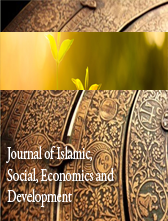FRAMEWORK OF THE USE OF BIG DATA IN EDUCATION MANAGEMENT RESPONSE STRATEGIES AMONG UNDERGRADUATE STUDENTS IN NANCHANG
Abstract
In the era of big data, Chinese universities are using new reaction tactics for educational management, and this study looks at their theoretical foundations. Bloom's Taxonomy, Gagne's conditions of learning, Howard Gardner's multiple intelligences, and the technology acceptance model are the four main theoretical frameworks used. When taken as a whole, these theories offer a solid basis for analyzing and bettering the educational system as a whole. While Gagne's conditions of learning highlight the significance of learning objectives and levels, Bloom's Taxonomy provides a hierarchical model for cognitive development, both contributing to a more enriching educational experience. Howard Gardner's theory of multiple intelligences recognizes that each student has unique strengths and learning preferences, and the Technology Acceptance Model directs the effective use of technology in the classroom. The integration of these theories is an effort to boost teaching and administration standards and make way for a flexible, technologically-driven classroom. With the advent of the big data era, Chinese higher education has new and different issues, and this research aims to contribute to more effective techniques for meeting those needs.













